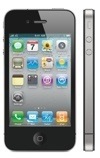Apple has released iOS 4 — the latest version of the operating system formerly known as the iPhone OS — for the iPhone and iPod touch. It’s available for download from iTunes for iPhone 3GS and 3G users, as well as by second- and third-generation iPod touch users. The new OS will also be included with the iPhone 4.
iOS 4 is compatible with iPhone 3G, iPhone 3GS, iPhone 4, second and third generation iPod touch (late 2009 models with 32GB or 64GB). Some features may not be available on all products. For example, Multitasking requires iPhone 3GS, iPhone 4 or third generation iPod touch (late 2009 models with 32GB or 64GB).
iOS 4’s new multitasking offers users a way to move between apps, and provides developers seven new multitasking services to add multitasking features to their apps. These services include background audio, so apps like Pandora can play music in the background, and VoIP, so VoIP apps can receive a VoIP call even when the iPhone is asleep or the user is running other apps. iPhone OS 4 provides multitasking to third party apps while preserving battery life and foreground app performance, according to Apple.
Folders help users better organize and quickly access their apps, according to CEO Steve Jobs. Simply drag one app icon onto another, and a new folder is automatically created. The folder is automatically given a name based on the App Store category of that app, such as “Games,” which the user can rename. Using folders, users can now organize and access over 2,000 apps on their iPhone. Users can also create and manage iPhone folders on their Mac or PC using iTunes 9.2.
iOS 4 also sports a new Unified Inbox for email, allowing users to see messages from all their email accounts displayed together in a single inbox. By tapping, users can switch between inboxes to see messages from any single account. In addition, users can now thread their messages by conversation, as well as open email attachments with compatible apps from the App Store.
Jobs said new enterprise features in iOS 4 include improvements in security, scalability and compatibility. The new Mobile Device Management service can be integrated with third party servers to wirelessly configure, query and even wipe or lock managed iPhones. iOS 4 enables enterprises to host and wirelessly distribute their own in-house developed apps to employees.
The new Data Protection feature uses a user’s passcode as an encryption key to protect mail messages and attachments stored on the iPhone. iOS 4 now provides the option to set a longer, more complex passcode, making iPhone and its data even more secure. The upgraded operating system allows IT managers to set up multiple Exchange ActiveSync accounts, is compatible with Exchange Server 2010 and includes support for forthcoming SSL VPN applications from Juniper Networks and Cisco.
As for we iPad users, iOS 4 for the bigger device won’t be available until the fall. And Apple hasn’t announced a firm date for the iPad version’s release.



